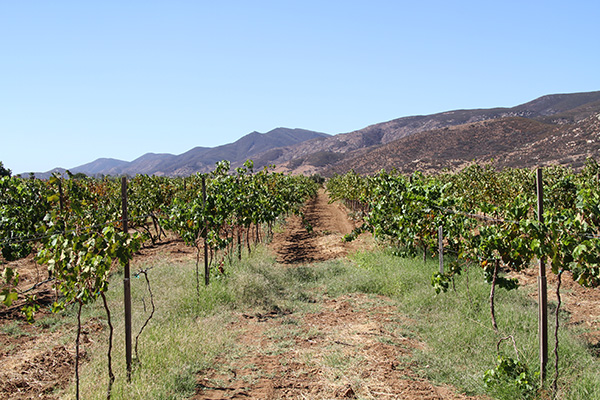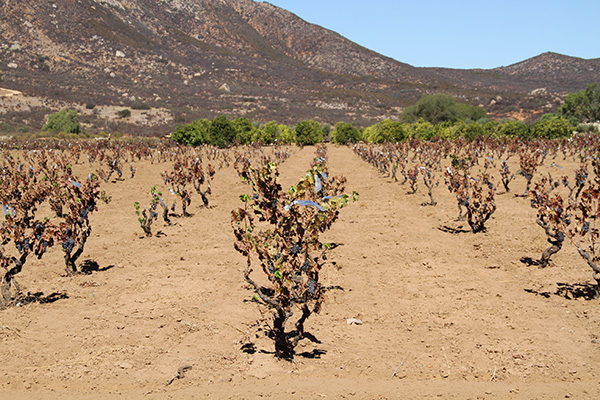|
THE NONIRRIGATED VINEYARD
In the Fall of 2013, I visited one of the more prominent wineries
of the Guadalupe Valley, in Baja California, Mexico.1
The purpose of the visit was to obtain first-hand information about the water
management practices of the commercial winery industry in
this markedly arid region.2
The resident enologist took our research group around
the vineyard to explain the details of the operation.
We were shown several irrigated groves, where we were struck by the greenness
and uniformity of the vines (Fig. 1). We were also shown a few nonirrigated groves, which were strikingly different from the irrigated ones (Fig. 2).
The nonirrigated groves were definitely not as green and certainly
not as uniform
as their irrigated counterparts.
To our surprise, the enologist remarked that their higher quality wines
were made with grapes from the nonirrigated plots!
This fact begs a suitable explanation. We reckon that all plants require
solar energy, carbon dioxide, water, and nutrients in their metabolism.
They obtain energy from the sun, carbon dioxide from the atmosphere,
and water and nutrients from the surrounding environment,
either naturally, through
dryland agriculture, or artificially, through irrigation and
associated fertilization.3
It is certain that the nonrrigated vines are left on their
own as far as their water needs are concerned; therefore, they
are forced to send their roots
to deeper ground in search for any available soil moisture.
In this quest, presumably, they avail themselves of a more diverse set of nutrients;
thus the higher quality of the grapes and resulting wine.
Conversely, the irrigated vines are able to
receive as much water as they need,
but this is at the cost of decidedly shallower roots and
consequent limited nutrient quantity and quality, often requiring fertilization.
The uniformity and lack of diversity of their grapes may be surmised.
It follows that a progressive winery located in an arid region,
looking for quantity and quality in their wines, must consider
growing both irrigated and nonirrigated grapes.
1
There are more than sixty (60) wineries in the Guadalupe valley.
2
The mean annual precipitation in the Guadalupe Valley
is 292 mm, or 11.5 in, corresponding to an arid region.
3
See ⇒ Ponce, V. M., 2011: The 800-mm isohyet: Health and hope.
| ||||
|
| 170620 07:00 |

